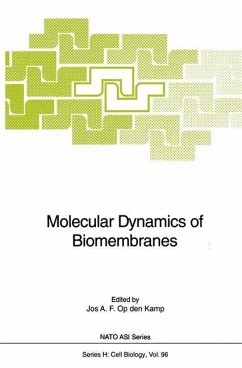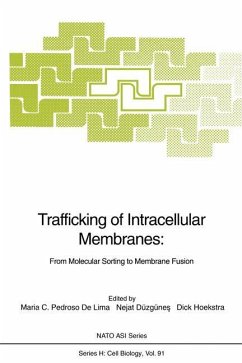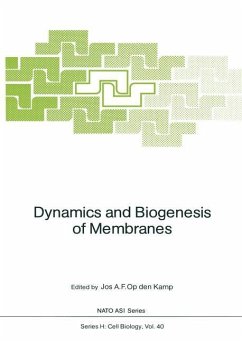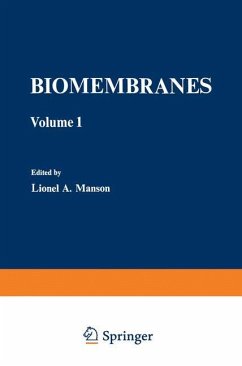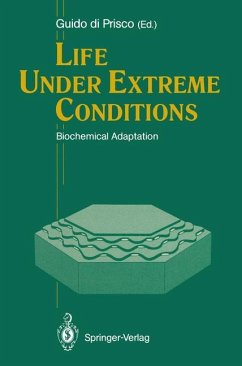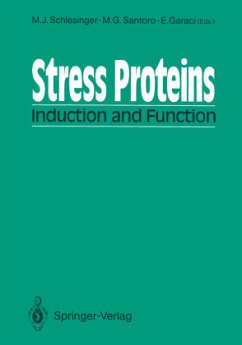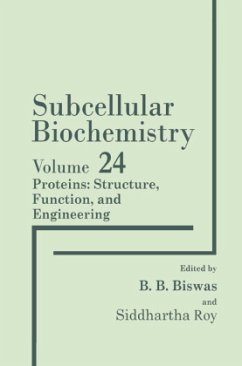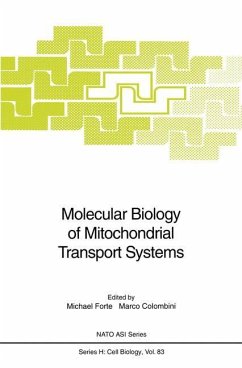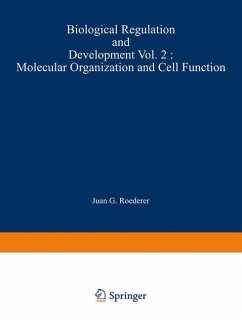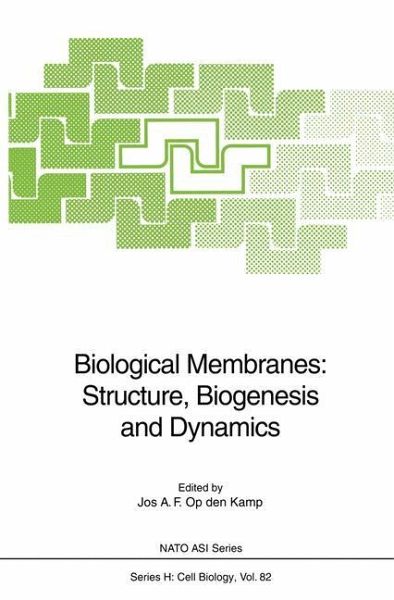
Biological Membranes: Structure, Biogenesis and Dynamics

PAYBACK Punkte
38 °P sammeln!
The Advanced Study Institute on "Structure, Biogenesis and Dynamics of Biological Membranes, held in Cargese from June 14-26, 1993, has been dealing with four major topics in membrane biochemistry today: lipid dynamics and lipid-protein interactions, protein translocation and insertion, intracellular traffic aud protein structure and folding. The lecturers discussed these topics starting from several disciplines, including biochemistry, cell biology, genetics, and biophysics. This wayan interdisciplinary and very inte~sting view on biological membrane systems was obtained. At first an extensiv...
The Advanced Study Institute on "Structure, Biogenesis and Dynamics of Biological Membranes, held in Cargese from June 14-26, 1993, has been dealing with four major topics in membrane biochemistry today: lipid dynamics and lipid-protein interactions, protein translocation and insertion, intracellular traffic aud protein structure and folding. The lecturers discussed these topics starting from several disciplines, including biochemistry, cell biology, genetics, and biophysics. This wayan interdisciplinary and very inte~sting view on biological membrane systems was obtained. At first an extensive overview of -mainly biophysical -techniques which can be used to study dynamic processes in membranes was presented. Sophisticated approaches such as ESR and NMR have been applied succesfully to unravel details of specific lipid-protein interactions. x ray analysis provides detailed structural information of several proteins and the possible implications for protein functions. Information obtained this way is complemented by studies on mechanisms and kinetics of protein folding. The latter information is indispensable when discussing protein translocation and insertion: proces:;es in which folding and unfolding play essential roles. Extensive insight was offered in the complicated machinery of phospholipid biosynthesis. In particular, the application of sophisticated genetic techniques has allowed a better understanding of the mechanisms regulating the synthetic machinery and detailed studies on a variety of mutants, lacking one or more of the essential enzymes, have resulted in the beginning of a bL!:





